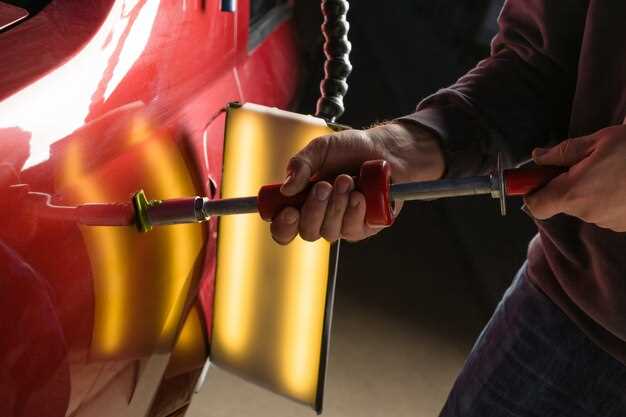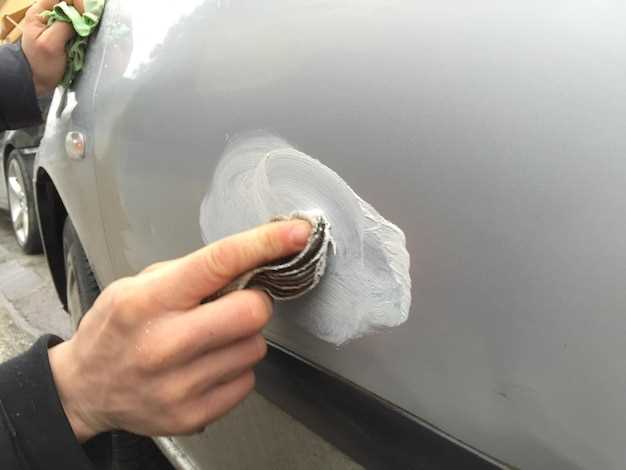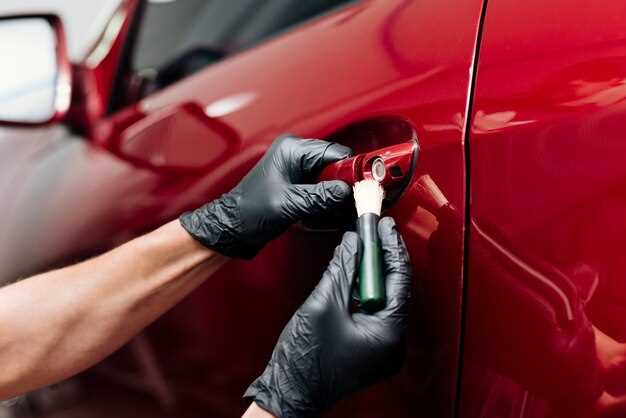How to restore faded car paint

Over time, the exterior of your car can suffer from various factors that lead to faded paint. Whether it’s exposure to sunlight, harsh weather conditions, or environmental pollutants, the aesthetic appeal of your vehicle can drastically diminish. The good news is that with proper care and the right techniques, you can effectively restore your car’s paint and bring back its vibrant appearance.
The process of paint restoration is not just about improving the visual appeal of your vehicle; it’s also about protecting your investment. A well-maintained exterior can help preserve the overall value of your car. In this article, we will explore practical steps and recommended products that can help you rejuvenate your car’s exterior, ensuring it looks fresh and new for years to come.
From assessing the condition of your paint to selecting the appropriate restoration methods, understanding the nuances of paint care is essential. We will delve into various techniques and tools that can aid in removing oxidation, scratches, and other imperfections, leaving you with a stunning finish. Reviving your vehicle’s paint is not just a chore; it can be a rewarding experience that enhances your driving pride.
Choosing the Right Products for Paint Restoration
When embarking on the journey of paint restoration, selecting the appropriate products is crucial for achieving an impressive finish. Begin by identifying the specific needs of your vehicle’s paint. If the paint has lost its shine due to oxidation, a good quality rubbing compound can effectively smooth the surface, enhancing its reflectivity.
Next, consider the use of polishing compounds. These are designed to refine the surface further, removing fine scratches and restoring depth to the paint. Look for products that contain micro-abrasives, as they provide a more gentle yet effective restoration process.
For more extensive damage, such as deeper scratches or chips, a paint scratch repair kit may be essential. These kits often include touch-up paints that match the original car color, ensuring a seamless restoration. Always verify the color code of your car to select the right shade.
Additionally, maintaining your car’s restored appearance requires the right maintenance products. A high-quality wax or sealant will protect the paint from harmful UV rays and environmental contaminants, helping to keep the finish looking fresh. Regular application will preserve the care invested in the restoration process.
Finally, always opt for products from reputable brands. Researching reviews and seeking recommendations can lead to better choices, ensuring that your paint restoration efforts yield lasting results. The right products not only rejuvenate your vehicle’s appearance but also extend the life of its paint.
Step-by-Step Process for Reviving Dull Paint

Restoring the luster of dull car paint requires a systematic approach that ensures optimal results. Start by gathering the necessary materials: car wash soap, microfibre towels, clay bar, automotive polish, waxing compound, and applicator pads. Ensure you have a clean and shaded workspace to prevent the products from drying too quickly during application.
Begin with a thorough wash of your vehicle using car wash soap. Use a microfibre towel to gently remove dirt and grime. Pay extra attention to crevices and areas where contaminants accumulate. Rinse the car completely and dry it with a clean towel to prevent water spots.
Next, employ a clay bar to eliminate embedded contaminants that regular washing cannot remove. After kneading the clay bar into a workable shape, lubricate the surface with a detailing spray and gently glide the clay over the paint. This process will produce a smooth finish essential for effective paint restoration.
Once the surface is clean, move on to polishing. Choose a suitable automotive polish that matches the condition of your paint. Apply a small amount to an applicator pad and work it into the paint using circular motions. The polishing process will rejuvenate the paint, enhancing its clarity and removing light scratches or oxidation.
After polishing, it’s time to apply a wax or sealant to protect the restored paint. Use an applicator pad to evenly spread the waxing compound over the surface. Allow it to haze for a few minutes, then buff it off with a clean microfibre towel. This step not only seals in the shine but also provides a protective layer against environmental factors.
Lastly, maintaining your vehicle’s appearance requires regular care. Wash your car frequently and consider periodic reapplication of wax to keep the paint looking fresh and vibrant. Consistent care ensures that your restored paint remains protected and showcases the beauty of your vehicle for years to come.
Maintaining Your Car’s Exterior After Restoration

After successfully restoring your car’s paint, it is crucial to adopt a proper maintenance routine to keep the exterior looking fresh and vibrant. Regular care will not only enhance the appearance but also extend the lifespan of the restored paint.
Start with routine washing. Use a pH-balanced car shampoo and a soft sponge to prevent scratches. It is recommended to wash your car every two weeks to remove dirt and contaminants that could damage the paint over time.
After washing, always dry the exterior with a clean microfiber towel to avoid water spots. Make sure to use a separate towel for the windows to ensure clarity and prevent cross-contamination of dirt.
Applying a high-quality wax or sealant every few months is essential. This layer provides a protective barrier against UV rays, bird droppings, and other environmental factors that can dull the paint. Waxing not only helps retain the shine but also makes future washes easier.
Be mindful of the surfaces your car comes into contact with. Parking under trees can lead to sap and debris accumulation, which can harm the paint if left untreated. If sap does get on the exterior, remove it promptly with a dedicated sap remover to avoid any lasting damage.
Lastly, consider using paint protectants such as polymer coatings for longer-lasting results. These products offer superior protection and can make your car’s paint shine for a longer duration. Regular inspections for scratches or chips are also essential to address any issues promptly, ensuring your car’s exterior remains in optimal condition.




